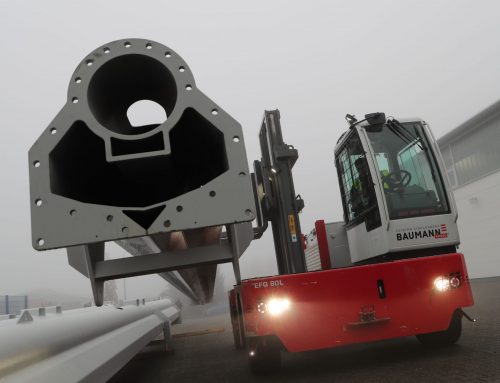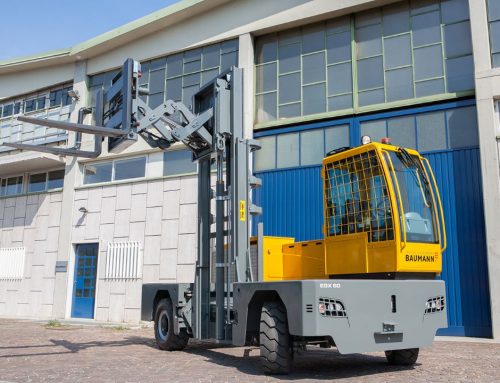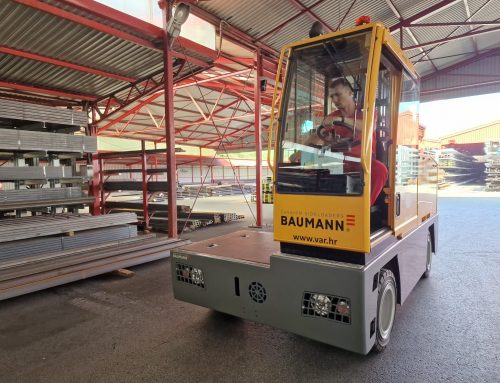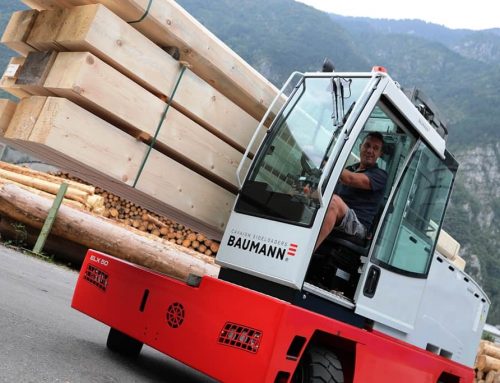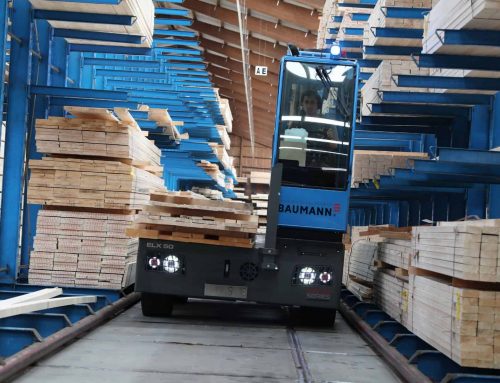All materials handling equipment, from counterbalance forklifts to sideloaders, reach trucks to reach stackers, are classified based on the safe amount of weight they can lift – their nominal capacity.
A number of real-world factors influence this ‘safe working load limit’, including the truck’s counterweight, the type of mast, weight and deration effect on the truck, and the height and reach at which the load is held. Even the tyre pressures, weather, ground conditions and inclination can influence the outcome.
It is difficult for manufacturers to know all these different variables, so to help accommodate some of these factors, manufacturers use a crucial parameter – the load centre.
Every load has a centre of gravity. The point at which the weight is focussed. It may be the physical centre of the load, but if the load is heavy at one side and light at the other, it will not.
When forklift manufacturers talk about load centres, they refer to the distance between the centre of gravity of the load being lifted (remember, this may be different to the physical centre point) and the inner heel of the forklift’s forks. It is a critical factor in determining the maximum weight capacity and stability of a forklift or sideloader, and basically says the machine is safe, when used “in this specific way.”
The truck’s load centre is usually expressed in inches or millimetres, and whether the operator adheres to this therefore varies depending on the size, shape, and weight distribution of the load being lifted.
So, each truck’s nominal capacity comes with a caveat – it is based on a pre-determined load centre, typically 600mm or 700mm (or more, depending on the fork length).
If the load centre is 600mm, the truck’s capacity will decrease as the load’s weight shifts further away from the fork heels. If you exceed the rated load centre, the machine becomes unstable and can tip over. This is because the load’s weight shifts too far away from the back of the forks, causing the centre of gravity to shift too far forward or backward.
This can be dangerous for the operator and anyone nearby, as the forklift may tip over or drop the load unexpectedly.
To prevent accidents and ensure safety, it is important to know the load centre of the load you are handling and the nominal capacity of the machine.
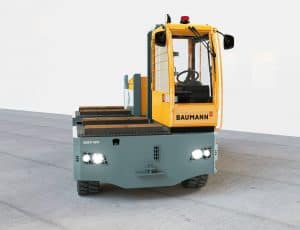 The machine is easy, it’s in the specification documents and ratings plate, but how do you determine the load centre of a load, particularly if it is uneven, and not on a pallet? Even if you do know the load’s own centre of gravity and load centre, can you be sure every load is held within the specific distance from the heel of the forks?
The machine is easy, it’s in the specification documents and ratings plate, but how do you determine the load centre of a load, particularly if it is uneven, and not on a pallet? Even if you do know the load’s own centre of gravity and load centre, can you be sure every load is held within the specific distance from the heel of the forks?
Even the best trained and most capable operator cannot know in every case, perhaps until it is too late.
To overcome this issue, there are usually two options – using a larger capacity machine with a greater margin for error – this comes at a price as they are typically larger and more expensive. The second option implemented by major forklift manufacturers are measures to minimise risk.
Some use sensors at the top of the mast to detect any oscillation. Built in weigh scales determine the current lift height and the load weight, a central controller unit processes all the data and sends control signals to the mast’s drive motor to take specific counter-movements.
Others restrict the mast travel speed and angle to minimise sway and combine it with counter measures in the axle to reduce the tipping effects. Depending on your point of view, these give operators either a greater level of confidence, or a false sense of security.
In truth, none calculate the load centre. The load centre is a difficult concept to factor-in when working in the real world, so these systems are inelegant solutions to a difficult problem.
Baumann sideloaders are rated at 600mm or 700mm load centres. Our nominal capacities mean that every load below the capacity can be safely carried when the load centre is respected.
“When we calculate the capacities of our trucks, like reach truck manufacturers, we also must factor-in the lifting height and outreach of the mast,” says sales director, Fabio Bernieri. “We also add body tilt, tilting carriages, pantographs and many additional factors into the equation.”
Despite the careful calculations, lifting a load at the fork tip or just not realising it exceeds the truck capacity can lead to a dangerous situation.
Adds Fabio: “For much of the past decade we have sought a solution and tried many different methods of determining how to help operators respect the load centre. Today, we have found the answer, with SafeLoad Assistance.”
SafeLoad Assistance uses sensors in the truck chassis to monitor the forces acting on the front and rear axles to determine the level of safety. Software in the cabin processes the forces and calculates the relative tipping point of the truck in relation to these forces.
It therefore by-passes the load centre problem and provides a more accurate and reliable guide to the safe operating level. A simple screen in the cabin shows the safety levels relative to the truck’s tipping point.
Operators can respond instantly to the warning to prevent dangerous situations occurring. Costly or harmful levels of damage to products, building infrastructure, machines, operators and pedestrians can be dramatically reduced.
Furthermore, the machine can measure the number of times the safe level is exceeded, and managers can assess operator capabilities and machine suitability.
“This is a game changer,” says managing director, Klaus Pirpamer. “A decade ago, this is something we could have only dreamed about. We have spent many years looking at this. The technology has evolved to allow us to find the right way to answer the load centre question, to give the accurate levels of safety the market has always desired.”
“The biggest challenge was finding the best way to take into account all the many variables at play,” adds technical director, Riccardo Bove. “We have tried different methods, some were extremely promising in accurately predict the tipping point, but because it is a crucial safety measurement, the system must be infallible. That is perhaps the reason why no company has been able to solve the problem, until now.”


